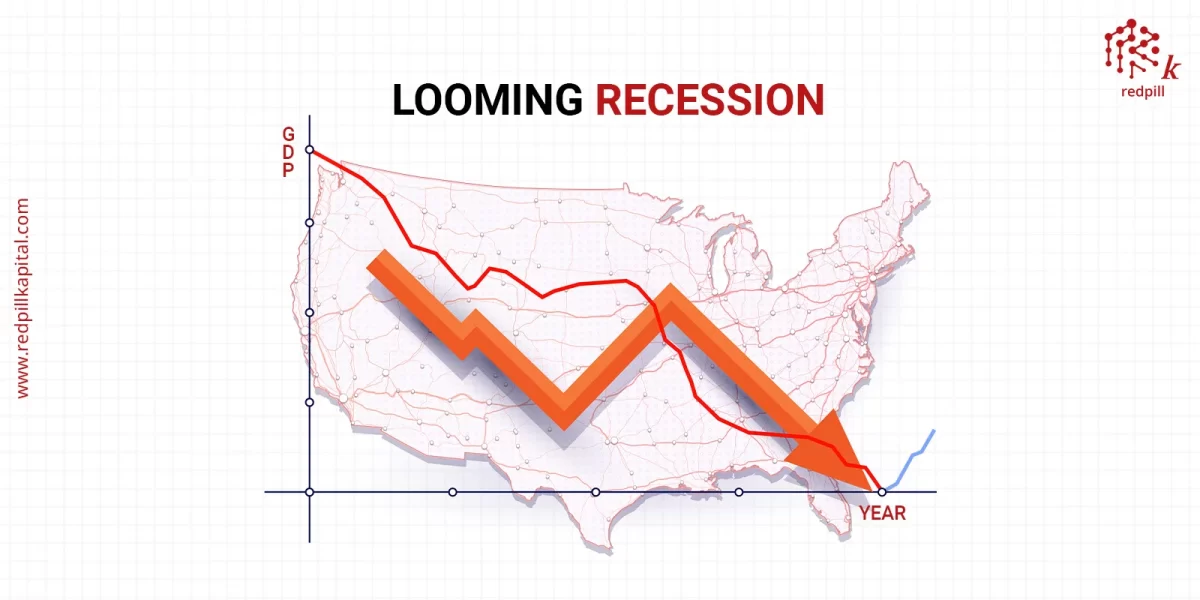In the face of higher interest rates and rampant inflation, the jobs market is somehow still going strong. For instance, the economy added an estimated 390,000 jobs in May 2022 and 528,000 in July.
Many businesses have “hiring” signs up, proving that although the current global economic crisis is slowing down the U.S. economy, we are not quite in a recession yet. So, here’s a look at how a recession affects unemployment rates.
Unemployment Rate Measures
To better understand the job market and unemployment rates, it’s essential to know the different categories of ‘unemployed.’ To calculate the unemployment rate, the U.S. Bureau of Labor Statistics (BLS) uses six measurements ranging from U1 to U6.
- U1 refers to the percentage of people who’ve been unemployed for more than 15 weeks.
- U2 is the percentage of people who have lost their jobs or finished temporary work.
- U3 is the official unemployment rate for people without jobs who actively sought work within the past four weeks.
- U4 encompasses U3 individuals plus those who are discouraged. They stopped looking for work because they believed that current economic conditions were unfavorable.
- These include individuals described in U4 in addition to marginally attached workers. U5 also includes individuals who would like to work but haven’t looked for work recently.
- These include people described in U5 plus part-time workers who want to work full-time but economic conditions do not allow it.
The different measures of unemployment can be better understood using the table below.

U3 is the most commonly reported of the six measurements, with U6 being a better depiction of the current unemployment rate. Despite the BLS focusing on U3 as the official unemployment rate, many economists feel U6 is more meaningful because it factors in a more significant percentage of unemployed people.
The current rate for U3 is 3.6%. However, this only takes into account unemployed people actively looking for work. So, if unemployed people stop looking for a job, they no longer form a part of the U3.
This “discouraged” person decreases the unemployment rate since they no longer count as unemployed. What this leads to is a false rate of unemployment.
The U6 unemployment rate as of June 2022 stands at 6.7%. One of the best indicators of the employment market is the temporary help penetration rate. June saw an increase in the temp help employment rate to 2.07% of the total labor market, and the trend is likely to continue.
Another issue affecting employment is the number of workers re-entering the job market as there is increased selectivity in looking for new opportunities.
Typically, one of the indicators of a looming recession is high unemployment. Indeed, apart from scrutinizing factors such as income, manufacturing activity, output, and business sales, the National Bureau of Economic Research (NBER) also factors in the employment levels.
While the GDP has contracted two consecutive quarters, a traditional indicator of a recession, the strong employment market is a real head-scratcher. Staffing companies report finding it difficult to fill the number of open jobs available.
But the NBER is on to something because the common denominator in all recessions seems to be jobs. Take 1960, for example. Household incomes rose if you adjusted them for inflation, but that was a recession. In 2001, the GDP didn’t contract for two consecutive quarters, yet the NBER called it a recession.
Through all the recessions, be it the 1960 or 2020 recession, the unemployment rate always stood higher than 6.1%. With the current figure of 3.6%, it’s perhaps easy to see why the NBER is slow to call this a recession.
Besides, payrolls keep expanding, hitting 1.6% between December 2021 and May 2022. Labor is scarce, with the BLS reporting more than 10.7 million job openings as of June 2022. Those are hardly the signs of recession.
Or maybe the job market is slow to react to the downturn. After all, sales and manufacturing have weakened. Whatever the case, recession or not, it’s a long shot to expect unemployment to rise to the ‘normal’ levels witnessed during a typical recession.
With that, some experts expect a shallow recession, and the jobs market will help cushion against severe dips. That employment growth should also assist in productivity. Most corporates also raked in exceptional profits, which should cushion them further.
President Biden lamented that oil and gas companies made profits at the expense of consumers. He famously quipped that “Exxon made more money than God” after the company posted a first-quarter profit of more than $5.48 billion.
Strong Job Seeker’s Market
Despite fears of a looming recession, the current job market favors job seekers. Job openings are high, while layoffs are extremely low. Daniel Zhao, a senior economist at Glassdoor, agrees that this doesn’t look like a job market headed into a recession, as labor demand is still red-hot.
The uptick in hiring works out for the Federal Reserve’s plan to slow the rising inflation rate. In May, the Federal Reserve increased interest rates by 50 basis points; a move meant to slow down consumer demand without tipping the economy into a recession.
Despite higher interest rates and inflation, the labor market continued going strong in May. A LinkedIn survey showed that hiring went up by 9.8% in May 2022, a figure 10% higher than pre-COVID. Industries with the most significant increase in hiring include accommodation, healthcare, and construction.
Final Word – Recession Threats Have Little Impact On Employment
Despite fears of a recession, the job market is not showing any signs of slowing down. This will continue to positively impact the unemployment rate as job openings remain high and employees continue to select the jobs they want.
A critical element that is often overlooked is not just simply the overall employment rate, the quantity of jobs; but the income associated with the job, the quality of the job. Despite returning overall employment to pre-pandemic levels, global wage growth has not kept pace with real inflation, and actual productivity has fallen off of a cliff.
At a macro level, I suspect we are in deep trouble.
www.redpillkapital.com
If you simply need more information. have questions, or want to discuss a specific deal, I’m always excited to help. Reach out to me at info@redpillkapital.com
If you are ready to start your journey to financial freedom but want specific additional educational materials, we have a course designed for physicians.




